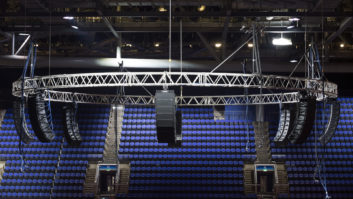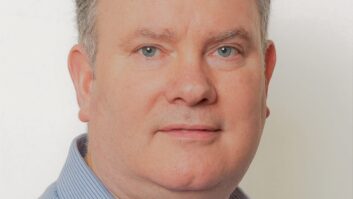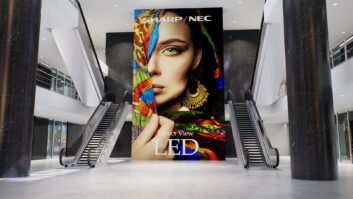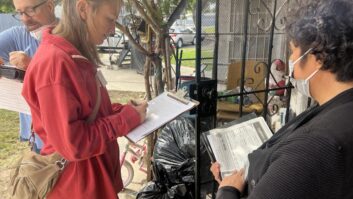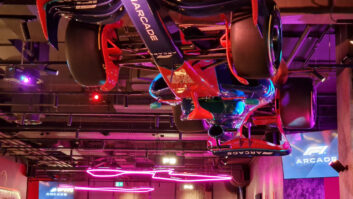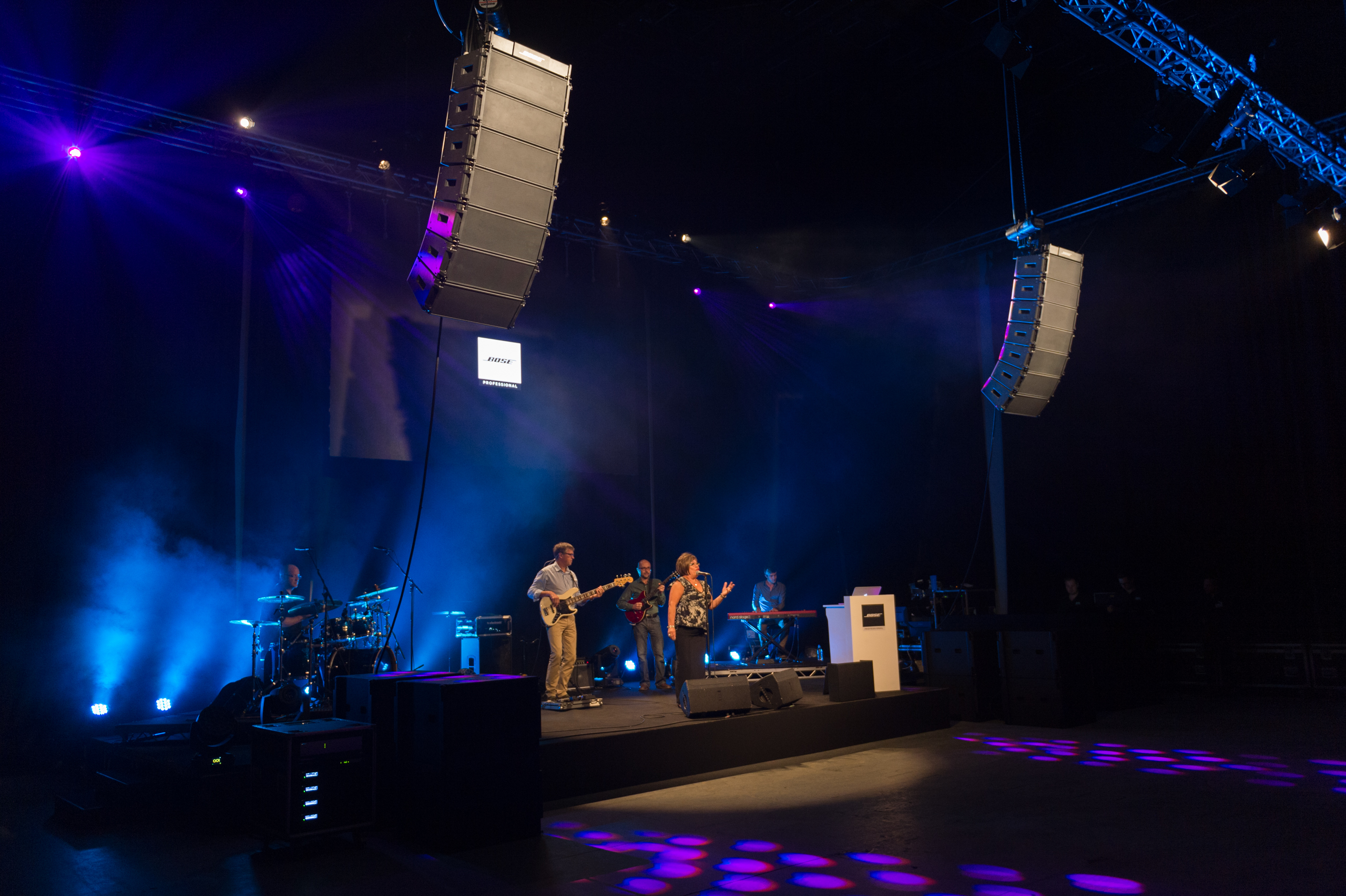
Paddy Baker gets a preview of Bose Professional’s new line array, which promises ‘great sound in every seat’.
Last month, Bose Professional hosted a demonstration of its new new ShowMatch DeltaQ line array system at Millennium Studios in Bedford. The product takes its name from the fact that directivity (Q) can be varied across each module in an array, to provide even coverage across the audience, and “great sound in every seat”. The product is aimed at both the installation and rental markets, although within the latter Bose is thinking more in terms of corporate events than concert tours.
Fuat Koro, director, global sales and marketing at Bose Professional, set the scene by calling ShowMatch DeltaQ “a category defining product line”. Senior field engineer Jörgen Allén then emphasised the faithful vocal reproduction that the speakers offer. “If a system doesn’t have vocal clarity, it won’t work as a sound system,” he stated.
According to Allén, “the single component most responsible for vocal clarity” is Bose’s EMB2S HF compression driver, four of which are present in each of the three cabinet models (together with two Bose 8in SM5 woofers). The HF driver allows the array modules to have a crossover point outside the main vocal range; it also produces 4dB more output than its predecessor. (Peak SPL for the cabinets is 145dB.)
Vertical and horizontal
The range’s variable directivity – which, says Bose, ensures that the sound can be targeted directly to the audience, avoiding reflections – has both vertical and horizontal aspects. The three cabinet models, the SM5, SM10 and SM20, feature vertical coverage angles of 5°, 10° and 20° respectively. On the SM5 only, the coverage overlap between adjacent cabinets can be varied from 0° to 5° in increments of 1°. This means that the ShowMatch can be used to form standard J-shaped arrays; DeltaQ arrays, where directivity varies among the modules; and constant-curvature arrays, replicating a point source. The cabinets are smaller and lighter than their counterparts in the Bose RoomMatch range.
The three speaker modules come with field-replaceable waveguides that, depending on model, can vary the horizontal dispersion between 55° and 120°. “For fixed installation, this is a really big advantage,” said sales engineer Pascal Vierdeel. “People can shape the sound to the size and shape of the room.” It’s possible to mix different angles in the same cabinet for asymmetrical coverage patterns.
The system can be augmented with the addition of the ShowMatch SMS118 subwoofer. This can be flown as part of the array or groundstacked: ‘reversed box’ configurations for cardioid coverage patterns are facilitated by the range’s bracketry and by the provision of a connector on the front grille. The subs’ performance was amply demonstrated with an EDM track.
Demo music
The basic demo system set-up consisted of two arrays of seven ShowMatch DeltaQ modules: three SM5 and four SM10 each side.
Demonstrations included a recording of Nessun Dorma, sung by a female vocalist. The vocals were warm and natural. This was followed by a jazz number, with male and female vocals, which was notable for the strong, but proportionate, presence of the acoustic bass. Mark Payne, technical director of SFL Group, the rental company running the event, later confided to me that, on hearing this track play, he had to double-check that it was only running through the arrays and not the subs as well.
Later on, a five-piece band took to the stage to play a couple of classic soul numbers. Again, the vocals (female) were extremely clear: I could hear every single word – to the extent that I could tell when the singer departed slightly from the original lyrics at one point.
We were invited to walk around the demonstration area, and the coverage was indeed pretty even, not just within the 100-and-something seats set out for the audience, but beyond as well.
I asked Koro what he thought other manufacturers will make of ShowMatch DeltaQ. “This is a new approach to array technology – that’s why we like to think of it as the next generation,” he replied. “So I’m sure they will look at our value proposition and recognise it as something that’s truly valuable to our industry.”
The range will be rolled out globally in November, which is also the planned release date for the latest version (6.9) of Bose’s Modeler software, which can be used to design and optimise ShowMatch (and RoomMatch) system configurations to specific room dimensions. This can model a virtual array at any point in space, and either automatically select the modules or allow the user to add these manually – with or without subs. The software also quantifies the efficiency of the system as the Q of different modules is varied, and the smoothness of the transition between adjacent modules. It’s also planned to have the facility to export a GLL file into EASE acoustic modelling software.
As well as the acoustic performance, the software also looks at the mechanical performance – checking that the selected rigging is within safe working limits, as well as giving the total weight, indicating the point(s) from which the array should be hung to give the desired angle, and showing the centre of gravity. Once the design has been finalised, Modeler produces a kit list of all the elements used.
